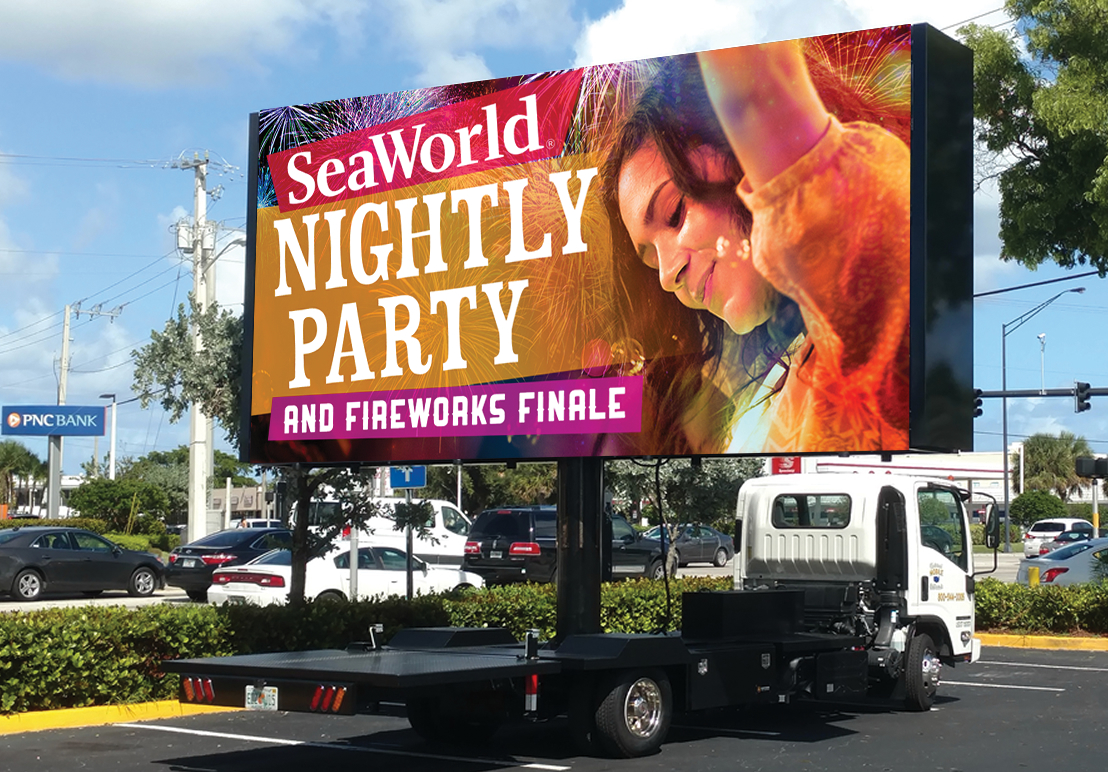Portable Billboards Ads: The Attribution Gap You Can’t Ignore
Portable billboards ads—also known as mobile billboard trucks—are often touted as high-exposure tools for outdoor branding. But when it comes to real attribution, they’re riding on vanity impressions. While they certainly attract glances on highways or in parking lots, these impressions are difficult to verify and even harder to link to meaningful action.
That’s where the problem lies: no amount of visual presence can replace true, measurable engagement. And that’s why in-hand media—like branded pharmacy bags, coffee sleeves, or pizza boxes—are quickly becoming the smarter alternative for marketers who care about performance, not just visibility.
In this blog, we’ll unpack the core attribution blind spots of portable billboards ads, contrast them with the precision of in-hand media, and provide marketing professionals with a more effective framework for ROI.
Portable Billboards Ads: Visibility Without Validation
Portable billboards ads are often praised for their mobility and reach. They allow advertisers to display messaging in high-traffic zones—near malls, stadiums, or events. But visibility doesn’t always equate to effectiveness.
🚫 Lack of Engagement Metrics
You don’t know who saw the billboard.
You can’t track how long they viewed it.
You have no idea if they took any action.
Traditional billboards advertising (stationary or mobile) offer almost no room for direct feedback. Unlike digital channels, you can’t measure click-through rates, bounce rates, or conversion rates. Even QR codes placed on mobile billboards have limited utility—no one’s scanning a QR while stuck in traffic.
🚫 Zero Personalization
Portable billboards ads are one-size-fits-all. The same generic message rolls through multiple ZIP codes without considering neighborhood demographics, household income, or cultural relevance.
🚫 Passive Exposure = Low Recall
Billboards ads, especially mobile ones, demand passive attention. A moving vehicle with an ad might pass in three seconds—and that fleeting impression is unlikely to translate into long-term recall or consumer action.
In-Hand Media: A Precision-Driven Alternative
Unlike portable billboards ads, in-hand media creates intentional, contextual, and trackable impressions. Let’s break down how in-hand formats like pizza box toppers, door hangers, and pharmacy bags solve the attribution gap:
✅ Active Touchpoints = Better Recall
Consumers physically hold the branded media.
It’s embedded in everyday moments—mealtime, medication pickup, home delivery.
These environments enhance message memorability.
According to neuroscience studies, tactile contact with print materials activates more parts of the brain and improves brand recall compared to visual-only formats like billboards advertisements.
✅ Hyperlocal Attribution with QR Codes
Each printed ad includes a ZIP-coded QR code or unique URL.
You know which neighborhood, time, and distribution partner triggered engagement.
You can even A/B test designs based on geography and audience.
This creates a closed feedback loop between the media, the user, and your analytics.
✅ Personalized by ZIP and Context
In-hand media allows you to tailor messages based on location, demographics, or moment. A legal firm can print “Been in a car accident?” on a pharmacy bag in a busy urban ZIP, while a local pizzeria can offer a coupon via a pizza box sleeve in a college town.
Portable Billboards Ads vs. In-Hand Media: Side-by-Side Breakdown
Feature |
Portable Billboards Ads |
In-Hand Media Advertising |
Targeting by ZIP |
Limited |
High precision |
QR Code Attribution |
Ineffective (hard to scan) |
Highly trackable |
Engagement |
Passive |
Active (touch-based) |
Recall Rates |
Low |
Above 80% (based on studies) |
Media Cost Efficiency |
High CPM |
Lower cost per recall |
Relevance & Personalization |
Generic messages |
Custom by audience & context |
When Attribution Matters More Than Impressions
Marketers who are serious about performance—especially in sectors like healthcare, legal services, and insurance—can’t afford to bet on outdated, non-measurable formats like portable billboard ads. Even if a billboard advertisement logs 100,000 “views,” what matters is how many of those translated into action.
In contrast, in-hand formats can:
Drive website visits directly via QR codes.
Segment by ZIP code and compare performance.
Generate first-party data through interactive content.
When marketing accountability is key, substance beats spectacle.
Real-World Example: QR Recall on Pharmacy Bags
Adzze recently deployed a campaign for a health insurance brand targeting households in two urban ZIP codes. Using pharmacy bag advertising with embedded QR codes, the campaign achieved:
82% aided recall
4.3% QR scan-through rate
2.7% conversion to quote form
Compare that with portable billboards ads in the same market—no attribution, no measurable leads.
The Bottom Line: Why Smart Brands Are Moving Past Billboard Trucks
Billboards advertising still has its place—but portable billboards ads are rapidly becoming an inefficient relic in a world obsessed with data-driven performance.
If you’re a marketer seeking:
Attribution that proves ROI
Localized messaging
Touch-based engagement
Micro-moment targeting






